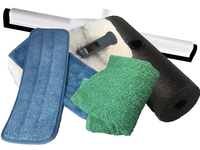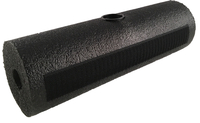Go Green
Living Sustainably
So you’ve done it all and you still feel sick? You’ve banned all of the toxic cleaners, fragrances, and detergents in the house! All of them gone! But you’re not really better…You’ve pulled up the carpeting and replaced it with a smooth surface that can’t harbor dust mites. Good riddance! Still you have the sniffles… The shower curtains are now glass doors, easy to clean, no mold. Done and done! Yet you still don’t feel right… If any of this sounds familiar, you may want to keep reading, because I know some tricks that you may have overlooked that could totally change the way you live in your home. And you may just begin to feel well again.
In some newer homes built during the recent “housing boom” products went in that were perhaps not the safest or least toxic, but instead were cheap and therefore profitable for the builder. Drywall that was imported from China during this time, for example, is now known to contain toxins and can harbor toxic mold. Some of these newer houses that were built using this imported toxic drywall are actually being torn down because of it. The landfill implications of this make my head spin, but it begs the question. If the walls can be toxic, what else? And what can be done short of a demolition to remedy the problem?
Toxic mold is its own beast, so if you have it in your home or suspect you might have it, abatement may be necessary. Having said that, two coats of a non-VOC paint on the walls can actually contain any off gassing that may be occurring. You may need to cover the paint that IS toxic with one that IS NOT. This same idea of containment can be done in the kitchen and bathroom as well. Cabinetry often contains UREA formaldehyde that is high in VOC’s, otherwise known as volatile organic compounds. These VOC’s are what give us the “new car smell” but they can often be odorless, which is much of the problem: If you could smell it, you might pinpoint the source more easily. A top coat applied to the cabinetry using a non-toxic clear sealer contains the problem. Granite countertops can even be off gassing small amounts of Radon gas, so that is another consideration. And don’t forget the adhesive used to attach the countertop to the cabinet base or the mirror to the wall if it was adhered.
If you live in an older home, there may be other things to consider. Vinyl flooring in bathrooms or wet areas can harbor fungus underneath them, making is difficult to detect. Water gets into the seams and seeps under, feeding bacteria and fungal spores. Replacing it with a larger size tile or a non-toxic laminate is a better option. Bamboo naturally inhibits microbial growth and is renewable, so this might be a good option. Bamboo sheets and cases for mattresses and pillows are available, too, as bamboo is a versatile and non-toxic plant. Just make sure you purchase from a reputable company doing business practices that are “green”, as most will tell you they are.
Hopefully some of these suggestions might help if you are wondering what is going on in your home to make you sick. This article was written by John Carlile Principal/President of Eco Echo interior Design of Eugene Oregon Ph: 541-687-0036 Cell: 541-510-8405 www.ecoechohome.com
About Mary
Mary Findley is a veteran cleaning expert and Founder of Mary Moppins. Mary built the company on the idea that she could create a way to make green cleaning easier, which inspired her to co-author "The Complete Idiots Guide to Green Cleaning" available on Amazon. The Mary Moppins line of specially designed cleaning tools are eco-friendly, yet industrial strength to give you the cleaning power you need to clean quickly and thoroughly.




